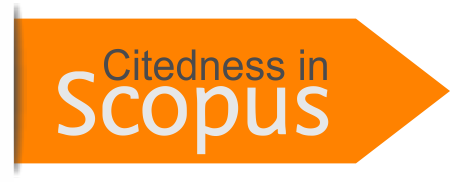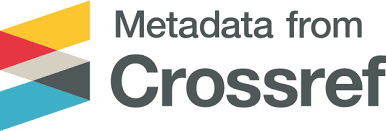Persuasive Communication RRI Pro 2 Padang in Improving Listening through Instagram Social Media
DOI:
https://doi.org/10.69989/1avs1m86Keywords:
Persuasive Communication, RRI PRO 2 Padang, InstagramAbstract
This study aims to determine persuasive communication RRI Pro 2 Padang in increasing listeners on Instagram social media and to find out the obstacles in carrying out persuasive communication and persuasive communication efforts carried out by RRI Pro 2 Padang in increasing listeners on Instagram social media. This study uses a qualitative method with a descriptive approach. The sampling technique used in this study used the Purposive Sampling technique, where the technique for taking samples of data sources is based on certain considerations, such as the person who knows best about what and the information we expect from the research. The research conducted uses the Theory Elaboration Likelihood Model (ELM) is a theory process double that explain change attitude a person. Theory This developed by Richard E. Petty and John Cacioppo in 1980. This theory is a general theory of attitude change which is believed to provide a fairly general framework for organizing, categorizing, and understanding the basic processes underlying effectiveness. communication persuasive. Persuasive communication conducted by RRI Pro 2, including using social media, can help RRI Pro 2 Padang in promoting their programs. To generate interest (desire) from listeners and watch or listen to programs presented by RRI Pro 2 Padang, it will require something that makes someone know about it and be interested. Persuasive communication is one of the most effective ways to do it, such as uploading content on Instagram to increase the number of listeners and followers of RRI Pro 2 Padang.
Downloads
References
Ahmad, S., Liang, L., Iqbal, A., & Sarki, I. H. (2025). Beyond likes and shares: the secret to building stronger brands on social media from a privacy calculus perspective. International Journal of Internet Marketing and Advertising, 22(1), 72–97. https://doi.org/10.1504/IJIMA.2025.144205
Belair-Gagnon, V., Nelson, J. L., & Lewis, S. C. (2019). Audience engagement, reciprocity, and the pursuit of community connectedness in public media journalism. Journalism Practice, 13(5), 558–575.
Febriela, A. Z., & Pintoko, W. W. (2024). Komunikasi Persuasif Penyiar Radio Mustang 88.0 FM untuk Menumbuhkan Self Actualization kepada Pendengar Program Mustang Morning Squad. Jurnal Komunikasi Esensi Daruna, 3(1), 1–7.
Freedman, D. D. J. (2023). Who Owns the UK Media? 2023 Report.
Johann, M., Wolf, C., & Godulla, A. (2021). Managing relationships on Facebook: A long-term analysis of leading companies in Germany. Public Relations Review, 47(3). https://doi.org/10.1016/j.pubrev.2021.102044
Kim, M. J., Chung, N., Lee, C.-K., & Preis, M. W. (2016). Dual-route of persuasive communications in mobile tourism shopping. Telematics and Informatics, 33(2), 293–308. https://doi.org/10.1016/j.tele.2015.08.009
Labudová, L. (2024). Current Leading Social Media Platforms Used by Marketers and its Benefits. A Conference Hosted By.
Lew, Z., & Stohl, C. (2023). What makes people willing to comment on social media posts? The roles of interactivity and perceived contingency in online corporate social responsibility communication. Communication Monographs, 90(1), 1–24. https://doi.org/10.1080/03637751.2022.2032230
McAlister, A. R., & Bargh, D. (2016). Dissuasion: the Elaboration Likelihood Model and young children. Young Consumers, 17(3), 210–225. https://doi.org/10.1108/YC-02-2016-00580
McCarthy, S., Rowan, W., Mahony, C., & Vergne, A. (2023). The dark side of digitalization and social media platform governance: a citizen engagement study. Internet Research, 33(6), 2172–2204.
McNally, N., & Bastos, M. (2025). The News Feed is Not a Black Box: A Longitudinal Study of Facebook’s Algorithmic Treatment of News. Digital Journalism. https://doi.org/10.1080/21670811.2025.2450623
Muninger, M.-I., Hammedi, W., & Mahr, D. (2019). The value of social media for innovation: A capability perspective. Journal of Business Research, 95, 116–127.
Munsch, A. (2021). Millennial and generation Z digital marketing communication and advertising effectiveness: A qualitative exploration. Journal of Global Scholars of Marketing Science: Bridging Asia and the World, 31(1), 10–29. https://doi.org/10.1080/21639159.2020.1808812
Newman, N., Fletcher, R., Robertson, C. T., Ross Arguedas, A., & Nielsen, R. K. (2024). Reuters Institute digital news report 2024. Reuters Institute for the study of Journalism.
Ortiz, J. A. F., De Los M. Santos Corrada, M., Lopez, E., Dones, V., & Lugo, V. F. (2023). Don’t make ads, make TikTok’s: media and brand engagement through Gen Z’s use of TikTok and its significance in purchase intent. Journal of Brand Management, 30(6), 535–549. https://doi.org/10.1057/s41262-023-00330-z
Petty, R. E. (2018). Attitudes and persuasion: Classic and contemporary approaches. Routledge.
Rennung, M., & Göritz, A. S. (2015). Facing sorrow as a group unites. Facing sorrow in a group divides. PLoS ONE, 10(9). https://doi.org/10.1371/journal.pone.0136750
Sallaku, R., & Vigolo, V. (2024). Predicting customer loyalty to Airbnb using PLS-SEM: the role of authenticity, interactivity, involvement and customer engagement. TQM Journal, 36(5), 1346–1368. https://doi.org/10.1108/TQM-12-2021-0348
Shi, J., Hu, P., Lai, K. K., & Chen, G. (2018). Determinants of users’ information dissemination behavior on social networking sites: An elaboration likelihood model perspective. Internet Research, 28(2), 393–418.
Wymer, S., DeMartini, A. L., & Brown, A. R. (2024). CrossFit Games: A Case Study of Consumer Engagement on Social Live-Streaming Service Platforms. International Journal of Sport Communication, 17(4), 461–475. https://doi.org/10.1123/ijsc.2024-0102
Zhou, A., & Xu, S. (2022). Computer mediation vs. dialogic communication: How media affordances affect organization-public relationship building. Public Relations Review, 48(2). https://doi.org/10.1016/j.pubrev.2022.102176
Downloads
Published
Issue
Section
License
Copyright (c) 2025 Yumi Ariyati, Dwinto Dwinto, Sumartono Sumartono, Yasha Langita (Author)

This work is licensed under a Creative Commons Attribution-ShareAlike 4.0 International License.
Copyright Notice
An author who publishes in the journal "Jurnal Ilmiah Ekotrans & Erudisi" agrees to the following terms:
Author retains the copyright and grants the journal the right of first publication of the work simultaneously licensed under the Creative Commons Attribution-ShareAlike 4.0 License that allows others to share the work with an acknowledgement of the work's authorship and initial publication in this journal
Author is able to enter into separate, additional contractual arrangements for the non-exclusive distribution of the journal's published version of the work (e.g., post it to an institutional repository or publish it in a book) with the acknowledgement of its initial publication in this journal.
Author is permitted and encouraged to post his/her work online (e.g., in institutional repositories or on their website) prior to and during the submission process, as it can lead to productive exchanges, as well as earlier and greater citation of the published work (See The Effect of Open Access).
All materials in this site are protected by the law. It is prohibited to quote a part of or all of this website contents for commercial purposes without the permission or consent of the editors.
If anyone finds one article or more in this journal violate or potentially violate one’s copyrights, please report to us through e-mail of Principle Contact.
Legal-formal aspects of accessing any information and manuscript in this journal website refer to the provision of license Creative Commons Attribution-Share Alike (CC BY-SA). Read more about the Creative Commons Attribution-ShareAlike 4.0 Licence here: https://creativecommons.org/licenses/by-sa/4.0/.
All information available in 'Jurnal Ilmiah Ekotrans & Erudisi' is academic in nature. 'Jurnal Ilmiah Ekotrans & Erudisi' is not responsible for loss due to the abuse of information in the website.
Information
Notice about change in the copyright policy of the journal 'Jurnal Ilmiah Ekotrans & Erudisi' : "From Volume 1, Nomor 1 onwards the copyright of the article published in the journal 'Jurnal Ilmiah Ekotrans & Erudisi' will be retained by the author"
Privacy Statement
The names and email addresses entered in this journal site will be used exclusively for the stated purposes of this journal and will not be made available for any other purpose or to any other party.



































